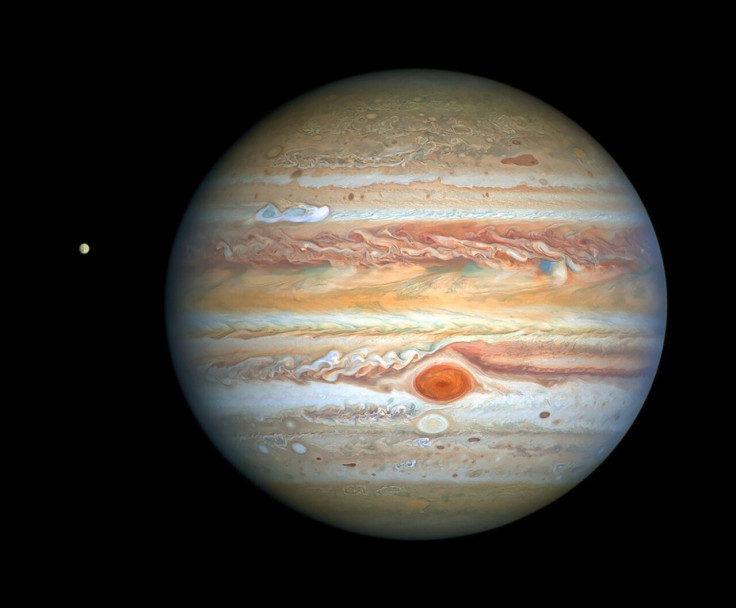Scientists share images of gorgeous meteoroid explosion on the surface of Jupiter
It slammed into the jovian atmosphere at a height of around 140 miles, high above the clouds of Jupiter.
Scientists using powerful telescopes from NASA's Juno spacecraft saw a bright meteoroid explosion in the atmosphere of the gas giant. The researchers were using the spacecraft to examine auroras on Jupiter when suddenly their eyes detected a brilliant explosion, which they surmised was a meteoroid smashing onto the planet.
While such impacts might not be rare for the biggest planet in the solar system as it does have some serious power when it comes to gravitational pull, seeing it happen live is a sight to see, the scientists said. "However, they are so short-lived that it is relatively unusual to see them," said Rohini Giles of the Southwest Research Institute. She is the lead author of a study published this month in Geophysical Research Letters, a peer-reviewed scientific journal published bi-weekly by the American Geophysical Union.
Giles also said that she and her team felt very lucky that they were pointing the telescope at exactly the right time and on the area where the meteoroid hit. "This bright flash stood out in the data, as it had very different spectral characteristics than the UV emissions from Jupiter's auroras," Giles said in SWRI.
By studying the brightness and other information from the flash, Giles' team estimates that it might have come from a space rock with a mass of around 550 to 3,300 pounds. It slammed into the jovian atmosphere at a height of around 140 miles, high above the clouds of Jupiter.
Amateur astronomers detected similar impacts during the past decade, including a truly dramatic one that occurred in 2019, using Earth-based telescopes. During that time, Ethan Chappel, an amateur stargazer using only a backyard telescope observed a bright flash on Jupiter's atmosphere. Chappel captured the meteoroid's impact on the gas giant on the lower-left section of the planet.
Another impact on Jupiter today (2019-08-07 at 04:07 UTC)! A bolide (meteor) and not likely to leave dark debris like SL9 did 25 years ago. Congrats to Ethan Chappel (@ChappelAstro) on this discovery and H/T to Damian Peach (@peachastro) for the report https://t.co/lj38ncBZuI
— Dr Heidi B. Hammel (@hbhammel) August 7, 2019
The event was widely celebrated by both amateur and professional astronomers alike due to the rarity of the episode. However, Giles and her team had a unique advantage through NASA's Juno, which hangs out near the gas giant itself.
NASA's images of Jupiter are truly breathtaking.
— Jenn Ravenna Tran (@JennRavenna) February 23, 2021
The planets larger circumference + higher wind speeds + it's faster rotation is the cause of the big swirl storms that are like hurricanes. And since there's no solid surface, the atmosphere is more active. pic.twitter.com/3tdE30va7U
This is not CGI. These are actual pictures of Jupiter taken by @NASAJuno. Just spectacular.
— Ajit Pai (@AjitPai) February 23, 2021
These and many other images available via @NASA: https://t.co/CNTQWAhGSZ pic.twitter.com/Zy0UwCwlXn
Objects slamming into Jupiter are a big deal for many. The biggest meteoroid crash observers saw on the planet was in 1994 when Comet Shoemaker Levy 9 slammed into Jupiter's atmosphere. Scientists studied the event extensively.
According to Giles, impacts from comets and asteroids cause a significant effect on the stratospheric chemistry of a planet. Fifteen years after it hit Jupiter, comet Shoemaker Levy 9 is still hugely to blame for 95 percent of stratospheric water on the giant gas planet. "Continuing to observe impacts and estimating the overall impact rates is, therefore, an important element of understanding the planet's composition," she said.
© Copyright IBTimes 2024. All rights reserved.







